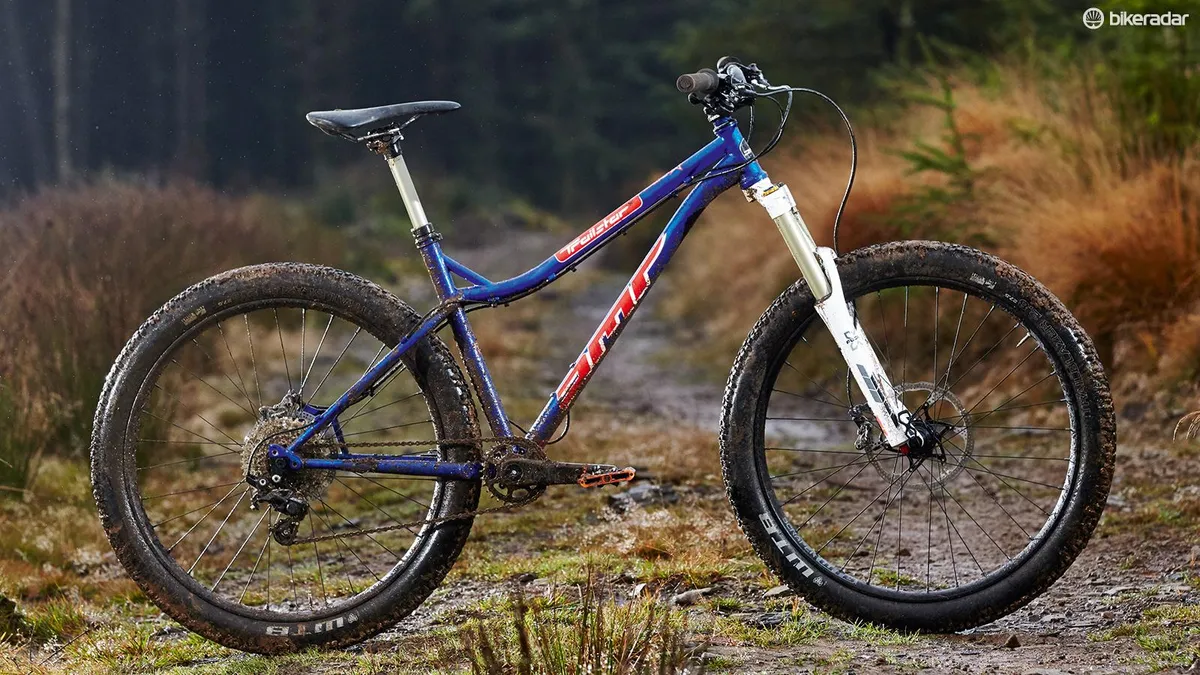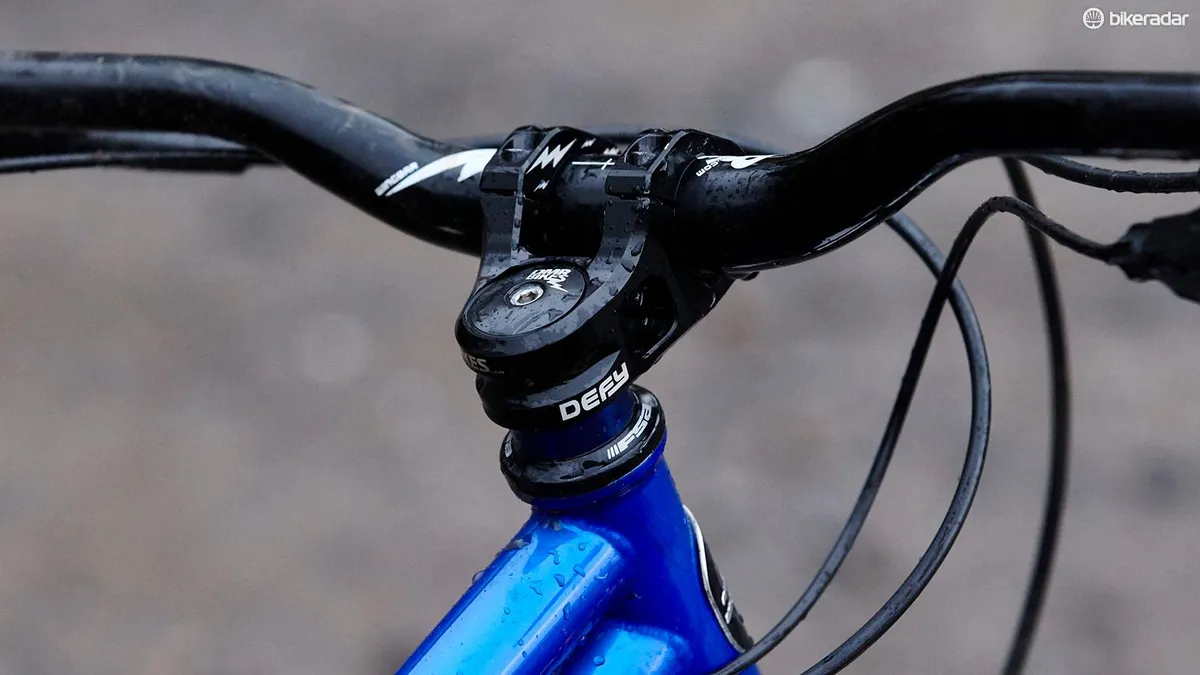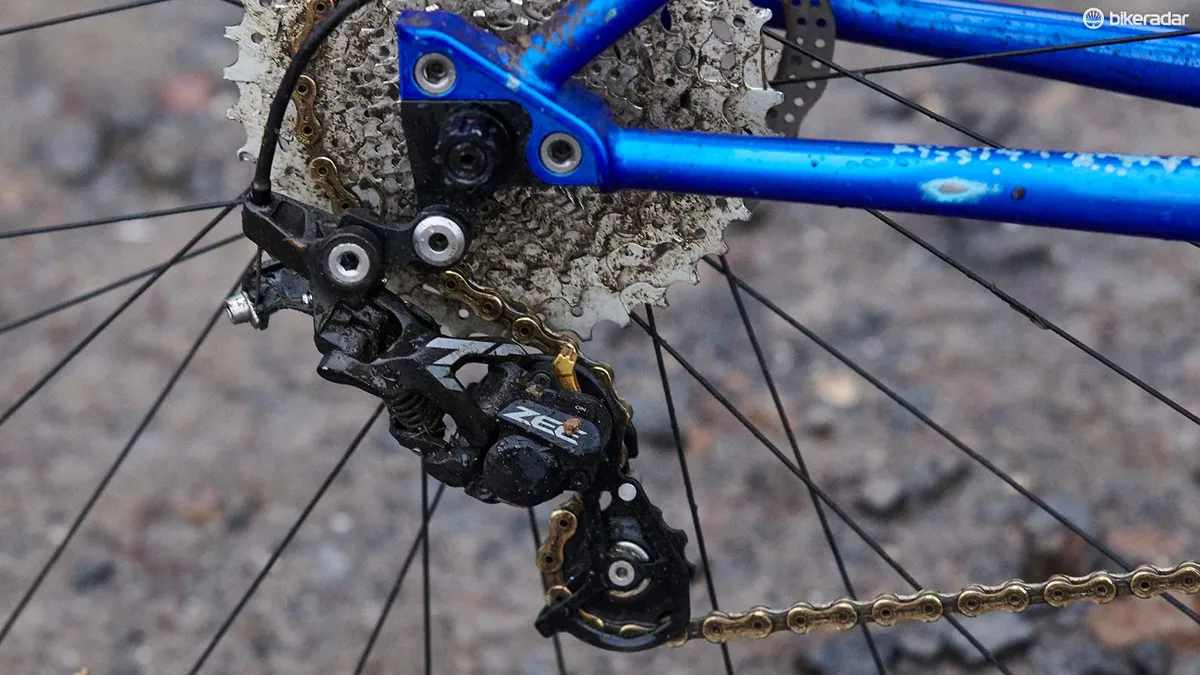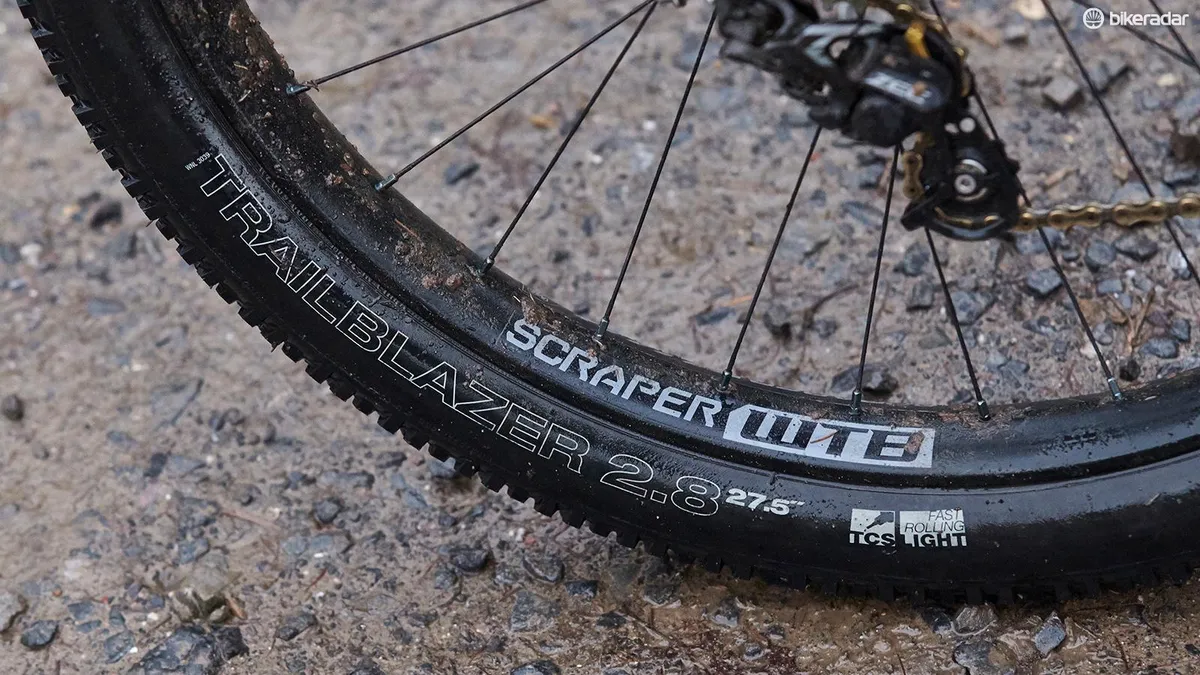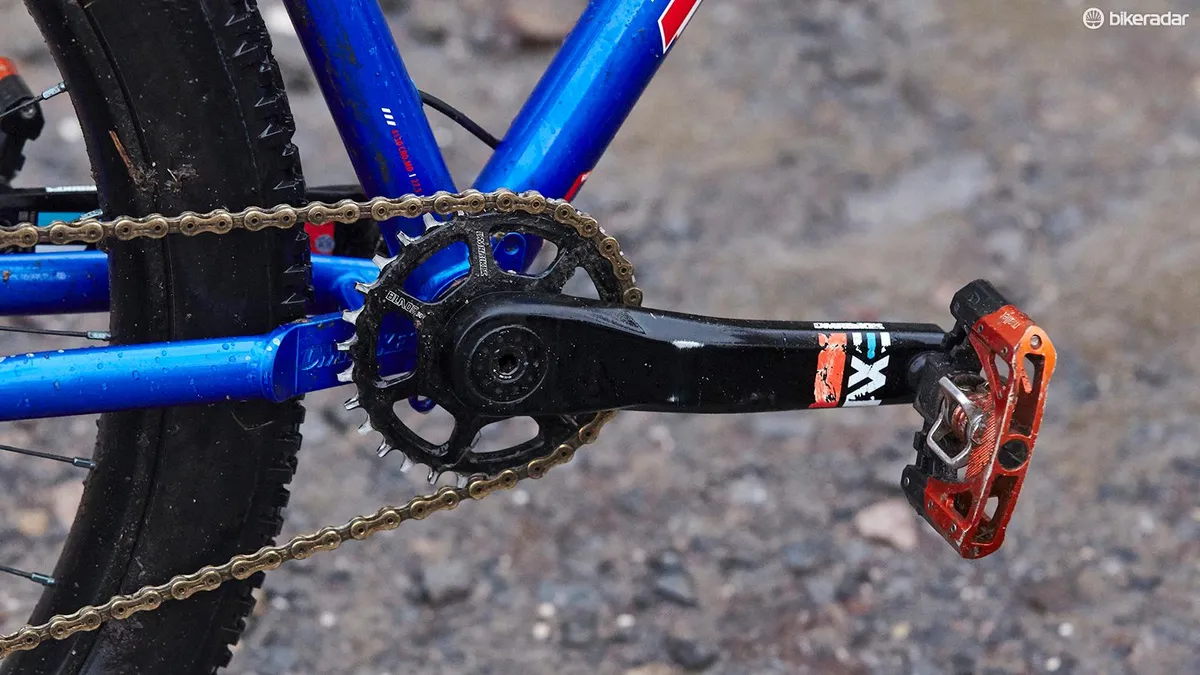DMR’s legendarily indestructible steel hardtail has been reborn as a bang-up-to-date, plus-size possible playbike that proves you don’t need a rear shock to have a load of fun on technical trails. A ton of super-slack bike is less fun uphill though.
Punishment-proof rig
DMR has a long history of punishment-proof machines. The Trailstar’s short head tube is tapered, with bulged top and bottom openings to take an integrated headset. There’s a big throat gusset supporting the stout double-butted down tube too.
The downward-kinked, double-butted top tube is relatively skinny though, while the seat tube splits the difference. It also does without bottle bosses for full seat drop with a rigid post and has an exit port for an internally routed dropper.
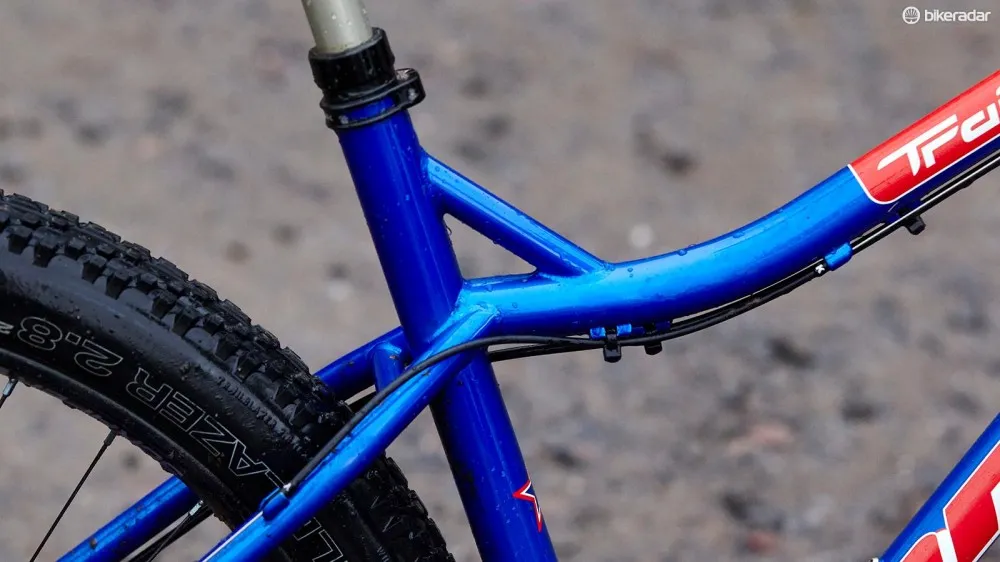
The top tube is relatively skinny
The traditional threaded BB gets an ISCG mount and the seat clamp is forward facing to stop rear wheel spray seeping into the electroplated, corrosion resistant frame. A driveside chainstay plate and wide-spread seatstays give massive tyre clearance and enough space for smaller plus-size tyres with the appropriate extended SwopOut dropouts. At 2.8kg for a bare frame it’s definitely built for maximum strength rather than minimum effort on climbs. There are no XS or XL sizes, though the L is very long.
The Trailstar is only available as a frame so distributor Upgrade built up our sample with kit from its range of brands. DMR supplied its own heavy duty, jump bike-inspired Wingbar/Defy cockpit, a Stage 1 saddle with built in inner tube holder and their new Axe single-ring cranks. A Praxis wide-range cassette completed the drivetrain. The Sweep Roughcut HLR fork and Hilo SLS dropper post came from X-Fusion, while TRP provided the four-pot Slate discs. The bike arrived fitted with a plus-size WTB wheelset but we also ran DMR’s Zone wheels for part of the test period.
Plus-sized possibilities
The fact the new Trailstar can handle smaller plus-size tyres is great for low pressure, ‘smother everything in flaccid rubber’ fans and adds useful versatility that’s still rare on 650b bikes (though more common on 29ers). Because the sheer volume and ‘lean, don’t turn’ character of the tyres masks a lot of the finer points of frame feel and handling, we did most of our comparative testing with DMR’s mid-width Zone wheels and a Schwalbe Nobby Nic/Rock Razor tyre combo.

The extra-long 650b+ SwopOut dropouts can be swapped for regular thru-axle, bolted or QR versions
It’s a sign of how well DMR has harnessed the naturally shock-shrugging potential of the steel tubing that it still didn’t feel too jarring through our feet and knees even when the fork was hitting full travel.
It’s certainly no full-suspension bike and you still have to dodge potentially rim-dinging rocks but the Trailstar rolls with the punches much better than the average alloy frame and better than most steel frames too. Add the well-damped long-travel fork and muscularly stiff DMR cockpit and it can be driven through normally speed-killing sections seriously hard as long as you’re light enough on your feet to save the rear rim.
The supplied 160mm fork was 10mm longer than the recommended upper limit for the frame, which tipped the already slack geometry back even further. Add a long front centre and you’ve got a very stable, naturally self-centring steering feel that’s just as speed- and chaos-proof as the frame feel – as long as you stay standing up.
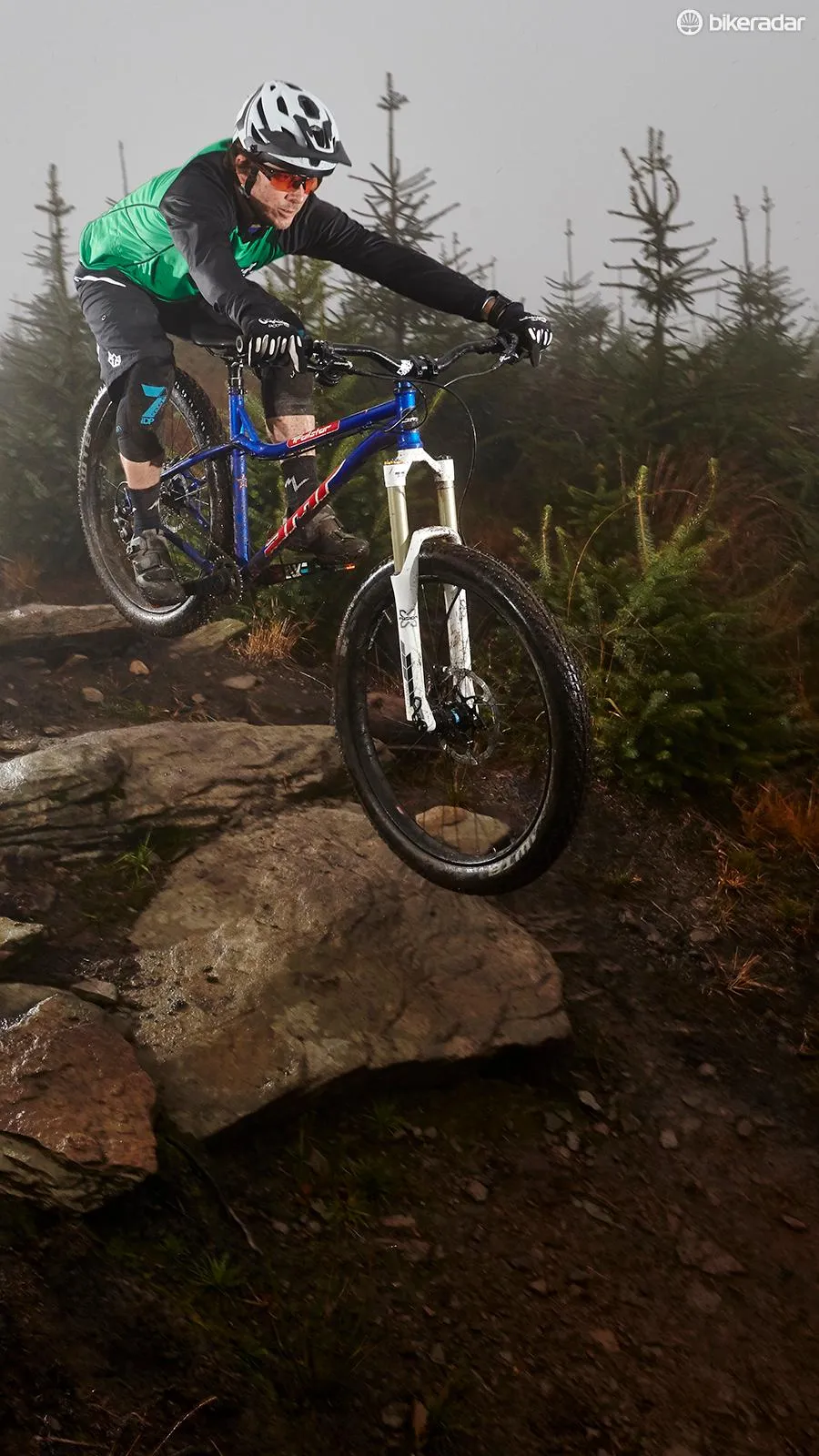
The Trailstar has steel's trademark forgiveness and shock shrugging character, even when you’re going full gas
Sit down, though, and the 69.5-degree seat angle takes too much weight off the distant front end, particularly when climbing or flat tracking. The long, skinny, kinked top tube also means more mainframe twist and tracking vagueness than we’d expect from the top-spec X-Fusion fork. Cue a lot of frustrating steering fumbles and loss of lines, even when we slammed the saddle forwards to steepen the effective seat angle as much as possible. We’d stick to a 140mm fork (at most) to get the seat angle the right side of 70 degrees and keep the front wheel stuck down and gripping more predictably.
Frame softness and high weight don’t do the Trailstar’s performance under power any favours, and unless the trail points downwards or rolls fast you’ve got a trudge on your hands. The forgiveness on landing takes some of the pop and snap out of take-off too, making this a bike best suited to big speed on big hills, not tight trick tracks.
• Price of Frame only: £499 / US$ TBC / AUS TBC
